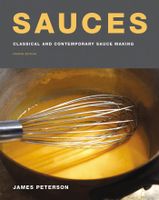Label
All
0
Clear all filters
Preliminary Browning
Appears in
Published 1991
Classic French cookbooks claim that preliminary browning of braised meats is necessary to create a seal to retain the meat’s natural juices during the first stage of braising. The reasoning behind this theory is that as the internal juices are released within the meat, pressure is generated that separates the meat fibers and aids in the cooking. All theory aside, perfectly acceptable braises and stews can be prepared without preliminary browning.
Preliminary browning does, however, improve the color of the braising liquid and, especially if the aromatic vegetables are browned as well, will give the braised meat or stew a somewhat more complex flavor. Initial browning also offers the chef the opportunity to flour the meat, which will help bind the finished liquid without giving it a floury taste. Browning cubes of meat for stews requires a certain amount of care and attention. If the meat is cold or added to the hot pan all at once, or the pan or pot used for browning is not hot enough to begin with, the meat will not brown properly and may even release liquid and begin to boil in its own juices. This has a disastrous effect on the meat, so it is best to add the meat to the pan in increments, about a quarter at a time, to prevent sudden cooling of the pan. Care should also be taken when turning the meat. If it is turned haphazardly or all at once, it may cool the pan too quickly, causing the juices to release. When browning large amounts of meat, it may be necessary to change pans during browning so that the caramelized juices do not overheat and burn.
Become a Premium Member to access this page
Unlimited, ad-free access to hundreds of the world’s best cookbooks
Over 160,000 recipes with thousands more added every month
Recommended by leading chefs and food writers
Powerful search filters to match your tastes
Create collections and add reviews or private notes to any recipe
Swipe to browse each cookbook from cover-to-cover
Manage your subscription via the My Membership page
Best value
Part of
Advertisement
Related Recipes
-
-
-
-
Related Reference
-
-
-
-
Advertisement
The licensor does not allow printing of this title



